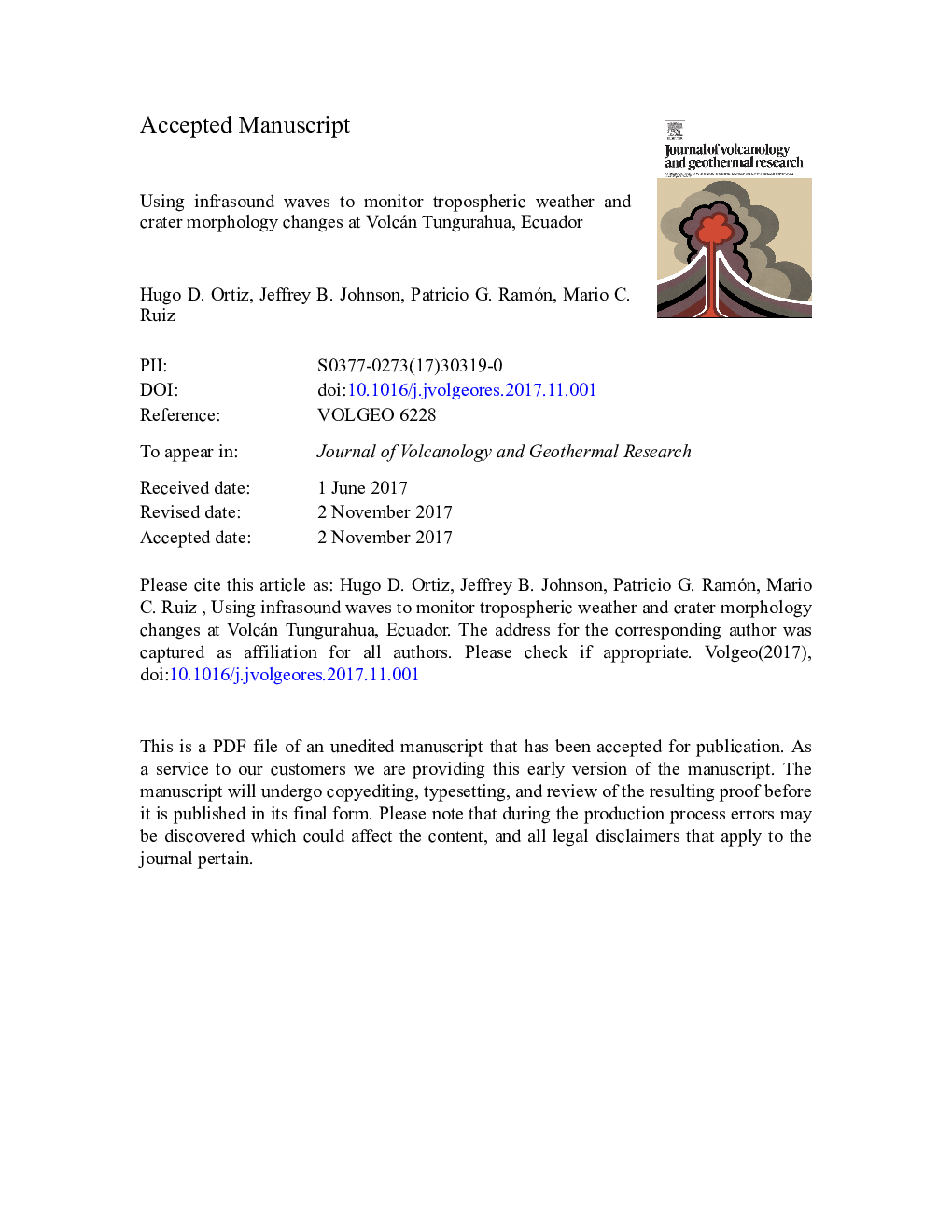| Article ID | Journal | Published Year | Pages | File Type |
|---|---|---|---|---|
| 8911426 | Journal of Volcanology and Geothermal Research | 2018 | 34 Pages |
Abstract
We use infrasound waves generated during eruptions of Volcán Tungurahua (Ecuador) to study both, changing atmospheric conditions and volcanic source characteristics. Analyzed infrasound data were recorded for a 32-month period by a five-station network located within 6.5Â km from the vent. We use cross-network correlation to quantify the recurrent eruptive behavior of Tungurahua and results are corroborated by reports from the Ecuadorian monitoring agency. Cross-network lag times vary over short time periods (minutes to days) when vent location is stable and attribute these variations to changes in atmospheric structure. Assuming a fixed source location, we invert for average air temperatures and winds in Tungurahua's vicinity (<Â 6.5Â km) and find evidence for diurnal and semidiurnal tropospheric tides. We also use cross-network correlation lag times to compute infrasound source positions with resolutions of ~Â 11.6Â m, taking into account coarse NOAA atmospheric models for local winds and temperatures. Variable infrasound-derived source locations suggest source migration during the 32Â months of analyzed data. Such source position variability is expected following energetic eruptions that destructively altered the crater/vent morphology as confirmed by imagery obtained during regular overflights.
Keywords
Related Topics
Physical Sciences and Engineering
Earth and Planetary Sciences
Geochemistry and Petrology
Authors
Hugo D. Ortiz, Jeffrey B. Johnson, Patricio G. Ramón, Mario C. Ruiz,
